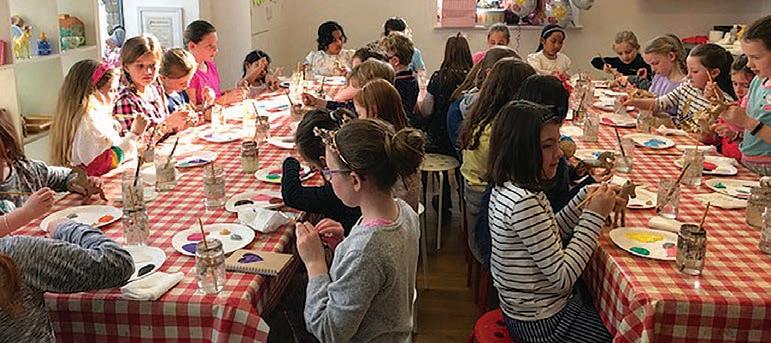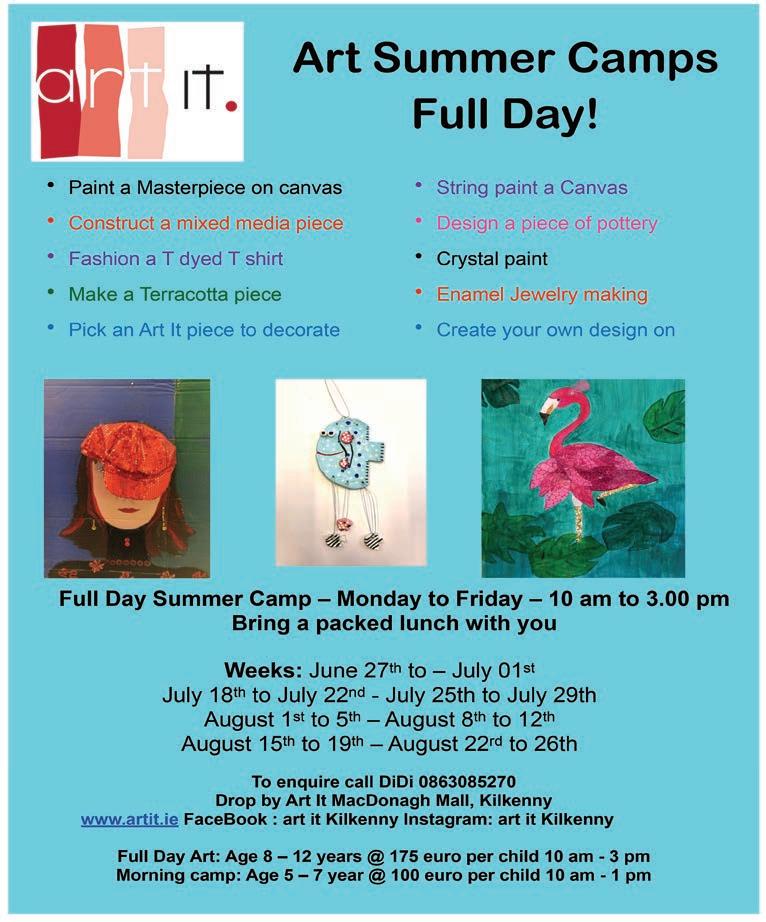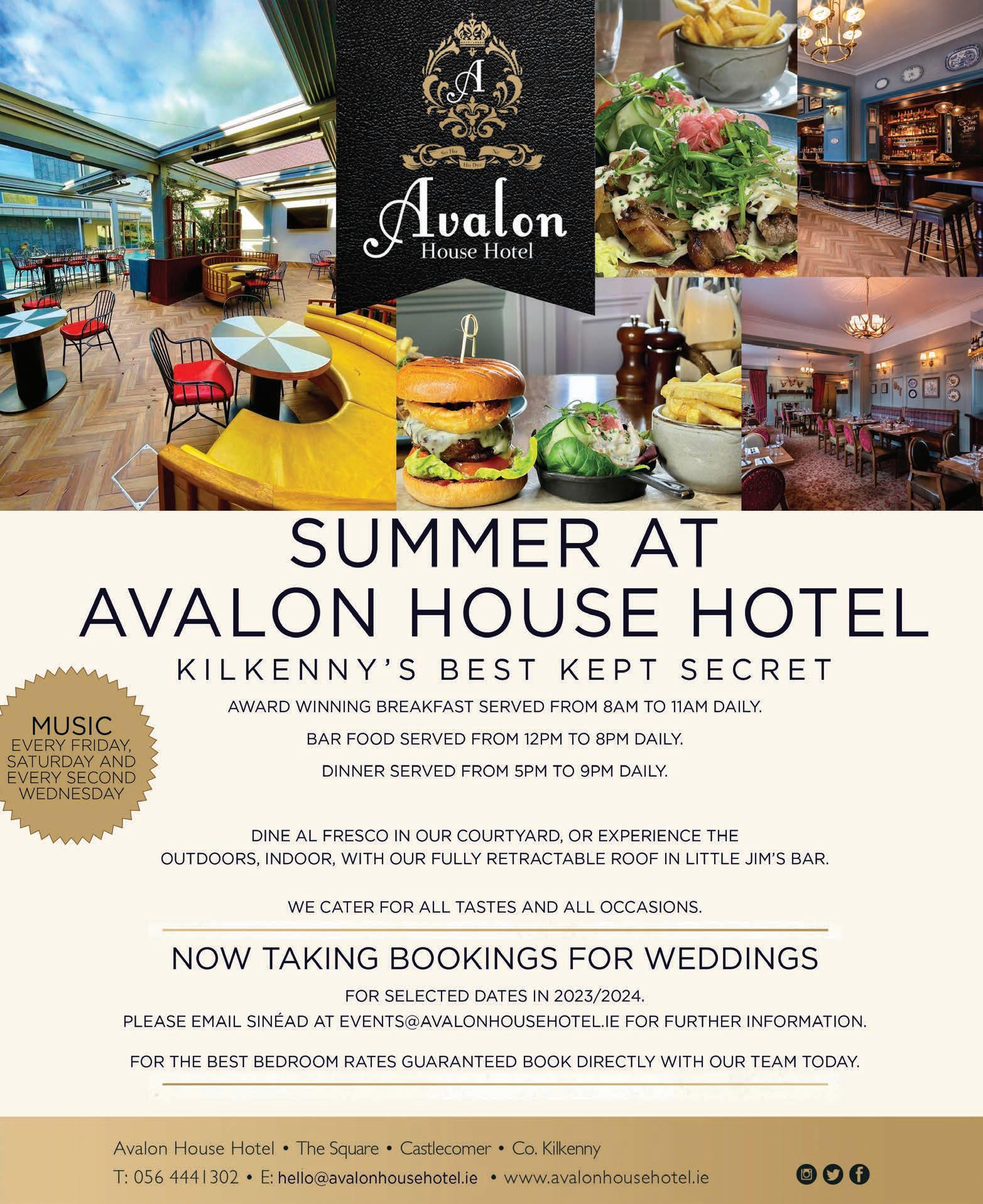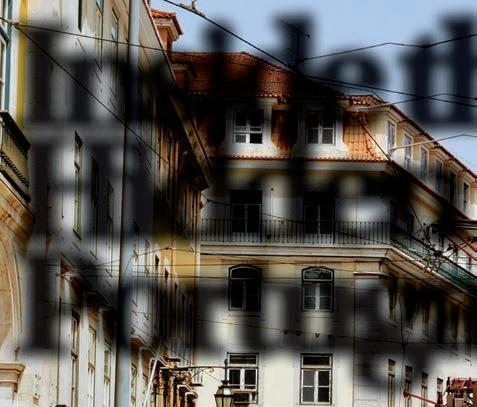
20 minute read
Travel & Leisure
Ireland is one of Portugal’s growing overseas tourist market. anks to the easing of Covid travel restrictions, thousands of Irish travellers are expected to head back there this summer, drawn mainly by its sunny south coast. But Portugal has so much more to o er than the beaches and bars of the Algarve.
Marvão, Alentejo
Advertisement
Tourists driving south to the Algarve or east to the Spanish border may think of the Alentejo (meaning ‘beyond the Tagus’ river) as an endless stretch of cork oaks and olive trees that takes forever to cross. Barrel across its vast plains and the only thing you’ll notice is that it is big; Alentejo is the largest and attest of Portugal’s provinces, occupying more than a third of the mainland.
But in its north-east corner, close to the Spanish border, the Serra de São Mamede is a mountain range that de es this idea of the Alentejo (there might even be snow in the winter). Some of the towns in this range have breathtaking settings, particularly Marvão, a serene and storied medieval village dramatically set 862 metres high on a granite crag. With its narrow lanes, whitewashed houses and formidable castle, Marvão o ers views across the Alentejo plains and over the mountains into Spain.
Nearby Castelo de Vide is another beguiling walled town, its castle rising above the town’s dazzlingly white houses, ower-lined cobbled lanes and peaceful squares. Locals are proud of the crystal-clear mineral water that spouts out of the pretty public fountains in this former Roman spa town. ose in search of a beautifully unspoilt Portugal will nd much to love in this part of the country, where life
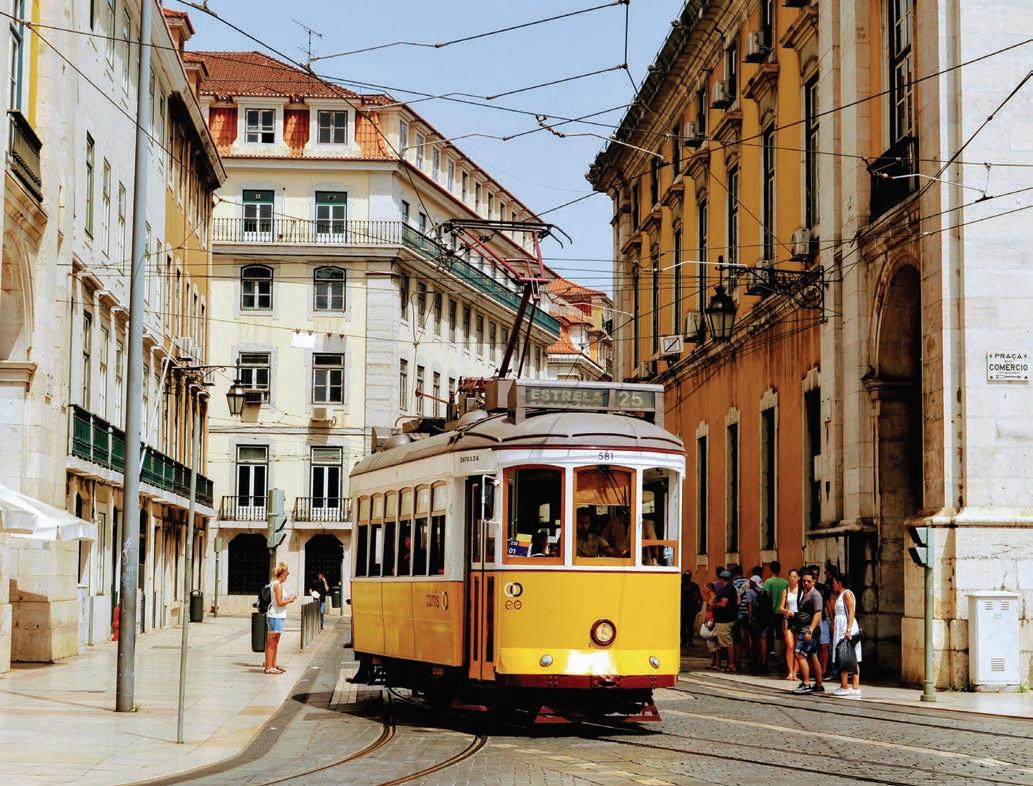
Inside the Hidden Portugal
eases along at a slower tempo. And there is no better way to soak in the mood than taking one of the two scenic routes o ered by Rail Bike Marvão (from €20) along a disused railway line. Between June and September, the company runs “full moon” night tours three times a month (€35 including drinks, petiscos and live music). Visitors use customised, two-person pedal-powered rail bikes to zigzag through megaliths in the stunning Serra de São Mamede natural park with views over Marvão and Castelo de Vide.
Ponte De Lima, Alto Minho
Portuguese holidaymakers are rediscovering Alto Minho, the country’s greenest area, tucked away in its north-west corner. Its rich soil, ample rainfall and thermal springs keep it perennially verdant, unlike much of the rest of the country.
On a hot summer’s day there is little better than taking a shady walk in the hills and enjoying a chilled bottle of vinho verde, the distinctive white wine of the region. Green only in name, it is slightly e ervescent, with a fruity nose and acidic bite, making it one of the great delights of travelling in northern Portugal.
Alto Minho’s main town is Viana do Castelo, in a delightful setting on the Lima estuary. Its medieval centre has elaborate mansions, windy streets and pretty squares. It makes a great base for exploring the Atlantic coast; the unspoilt beaches of Cabedelo and Moledo are popular with locals, who regularly brave the cold Atlantic waters.
But the highlight of the region is Ponte de Lima, a half-hour drive east from Viana do Castelo. is market town is one of the oldest and loveliest in Portugal, yet it sees comparatively few visitors. Built along the mellow banks of the Lima, the town is named after its elegant medieval bridge; ve of the bridge’s 13 stone arches date back to Roman times. e small, historic centre with winding alleys has cafes and mansions, but it’s also worth seeking out the romance of Ponte de Lima’s leafy outskirts. Centro Aventura organises guided kayak and paddle trips (from €30), and there are eco-trails and bike
Three alternatives to Venice for an Italian city break
1. Chioggia
Located at the southern end of the Venetian lagoon, Chioggia is becoming more and more popular as an alternative to Venice. Be aware, though, that this isn’t quite the mini Venice you might think from photos. Rather, it’s something totally di erent — but equally fascinating. In fact, the only similarity Chioggia has with Venice is its canal network, rippling through the town, and crisscrossed by pretty bridges.
Instead, Chioggia is working shing town. Forget the rare ed hush of Venice — this is a place where life is lived loudly. Cars, as well as foot passengers, cross the bridges, and chunky shing boats are parked up in the canals, instead of gondolas. Don’t expect countless museums: Chioggia is a place to live the lagoon as locals do (in fact, the best way to get here is with the summer vaporetto from the Venice Lido, which cuts through waters that only shermen usually ply).
Of course, there’s Venetian history — from the Lion of Saint Mark adorning the city gates to the Vittore Carpaccio painting in the Church of San Domenico. But really, Chioggia is all about lagoon life. perhaps that’s the reason these two have been feuding for centuries. In medieval times, the two cities battled to be the port of choice for pilgrims heading to Jerusalem; today, they’re still two of the biggest ports in Italy. But move inwards from Genoa’s bustling port and you’ll nd a maze-like tangle of narrow, medieval alleyways, full of hidden artistic treasures that are best experienced when you stumble across them by chance. Sound familiar? at’s because, like Venice, Genoa still lives its history, instead of putting it into museums. Grand palazzos, built for Renaissance nobility, now house shops (like Via Garibaldi 12) and bars (try Les Rouges). Look up wherever you walk, and you’ll see grand balustrades, neoclassical columns and balconies built to overlook the water, glittering in the distance. For your own sea view, take the art nouveau public lift to the Castelletto neighbourhood, where you’ll enjoy sweeping views of the Med glinting like diamonds. paths on both sides of the river.
Further a eld, the delightful Lima valley is sprinkled with ancient towns, historic manor houses, Romanesque churches and lush vineyards. Historic Quinta do Ameal, one of the top vinho verde producers, o ers tastings and tours (€25) of the attractive vineyard and winery, only 15 minutes’ drive from Ponte de Lima. e river remains an undiscovered gem in the region. A boat trip upriver o ers the chance to enjoy the silence while gliding through the landscape, admiring the birds on the banks. It’s a picture-perfect tableau even most Portuguese don’t know about. Mil Emotions o ers a variety of trips departing from Milfontes (€10-€30).
In this region, the Atlantic coast o ers scenic beaches galore, plus the Rota Vicentina’s network of walking trails. Milfontes itself has great beaches on river and sea, but 20 minutes away is the stunning Praia do Almograve, perfect for enjoying the sunset. Other lesser-known options include Brejo Largo and Praia de Nossa Senhora.
In this region, the Atlantic coast o ers scenic beaches galore, plus the Rota Vicentina’s network of walking trails. Milfontes itself has great beaches on river and sea, but 20 minutes away is the stunning Praia do Almograve, perfect for enjoying the sunset. Other lesser-known options include Brejo Largo and Praia de Nossa Senhora.
A little further away, Praia da Amália is named after the most famous fado singer in the country, Amália Rodrigues, who had a holiday home there. Also nearby is the promontory of Cabo Sardão, where dramatic high cli s face the unrelenting Atlantic waves – certainly one of the best natural viewpoints in the region.
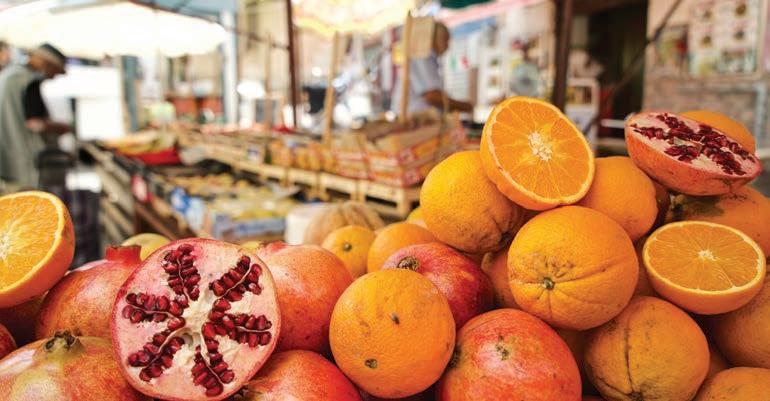
need the Sicilian capital. Sometimes, Palermo feels as crowded as the lagoon city on its busiest days — but the good thing about that is it’s almost always locals piling into the streets. And just as laconic Venetians couldn’t come from anywhere else, neither could the Palermitani, as they chatter in rapid- re dialect and chow down on arancine (ragu- lled rice balls: the equivalent of Venetian cicchetti) with the swagger that comes from knowing few cities compare to theirs.
Like Venice, Palermo has culture oozing from every pore. is is a place whose history is as strati ed as that of Venetian palazzos, layered up from the lagoon bed. It’s still in uenced by its former Arab and Norman rulers — the sweet and spicy food comes from the former, and much of the architecture from the latter. It’s a place of spectacular churches, just like Venice – Norman-built Monreale Cathedral, with its glittering Byzantine-style mosaics, is easily the equal of Saint Mark’s Basilica.
Mens HealthWeek
Mens health week takes place from Monday the 13th of June 2022 nishing on Father’s Day on the 19th June. is week aims to highlight some of the key issues uniquely a ecting men in Ireland. In conjunction with the HSE Mens Health Forum in Ireland has provided statistics to these issues to help bring awareness and reduce loss of life to men from preventable diseases in Ireland. ese include higher rates of alcohol and drug abuse, homelessness, and loss of life through suicide. Men are also more susceptible to certain forms of cancer, the leading causes of death in men, and heart disease with men accounting for over 70% of the overall gure. Key attitudes that contribute to these statistics are lack of health lifestyle choices and a reluctance for men to seek help.
At Teac Tom we have always strived to reach out to men of all ages to let them know support is available. Our approach to talk openly about mental health issues is having an impact on men reaching out for help with nearly half of all the service users of Teac Tom being male. Reaching out through school talks to schools and doing presentations in traditionally male dominated workplaces has ensured that, when it comes to mental health in particular, awareness is made support is there. Reducing loss of life through suicide is one of Teac Toms key primary goals and men are estimated to be three times more likely to end their life. ese key engagements have placed Teac Tom in the unique position that have made men access our service at near the same rate as women. e advice we give to friends and families that are worried about their husbands, sons and male friends is always the same. Don’t be afraid to ask. Men are very prone to very impulsive and violent behaviour towards themselves when in a state of distress. When you see signs of their mental health deteriorating as in withdrawal, not as active, poor self-care. Or are aware that life events such as job loss, family/ relationship breakdown etc are happening. Ask them – Are they ok? Would they bene t support?
To the men we have a unique message. e term “Man up” needs to change. e courage it takes to say you are not ok is huge. Be brave and strong in the right way. By seeking help. Man-up in its current form means to deal with things on your own and not get support. We now know this cost lives as it stops men from getting the right help at the right time. So Man-up by Speaking up.
If it’s in relation to health or mental health. Support is there once you ask. Teac Tom do not have a waiting time and you will get therapeutic support immediately if needed. We have trained therapists on hand ready to provide counselling assistance for a range of issues.
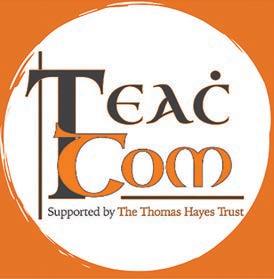
All information in this article was obtained from MensHealthForum Ireland @ https://www.mh .org/ mhw/about-mhw.html and statistics from e omas Hayes Trust
Beating bullies needs smart action
ANDREW MCDONALD HYPNOTHERAPIST
‘Sticks and stones may break my bones, but names will never hurt me.’ So states the children’s nursery rhyme, familiar to most of us from our schooldays. First appearing in a text known as ‘Eothen’ written in 1830, it has been around a long time.
What most people don’t know is it is predated, by a couple of millennia, by a statement of the complete opposite. ‘The blow of a whip raises a welt, but a blow of the tongue crushes the bones.’ This comes from the largest book of wisdom to have survived from antiquity, The Book of Sirach, or Ecclesiasticus, an ancient Jewish work of ethical teachings.
In 2022, it is the 19th Century ditty which seems outdated. Rightly so. Whilst physical victimisation is harrowing, and in no way acceptable, spoken abuse leaves scars which reach deep into a person’s character. Indeed, it is not uncommon for an adult to still be trouble by things which were said to them as a child, even when those taunts have proven untrue.
Bullies are cunning. We will never completely eradicate this phenomenon. As soon as one prevention is put in place, a way to circumvent it will be found. What we can do is prepare our children to deal with bullies in helpful ways.
Bullying can, but very often is not, the result of the bully alone. There are usually enablers, some of whom, in the background, may be even crueller. Recognising all of them is important. So too is discovering who sympathises with the victim, peers who are willing to stick up for him or her. Once they are established, the child on the receiving end needs to make them aware of their torment so they can help.
Frequently, there can be bullying patterns. It might be worse in the morning or at night. Maybe it’s online. Once the habitual nature of the bully is noticed, it’s easier for a child to surround themselves with adults or friends at peak times.
Finding a strong voice can be powerful. Usually, the bully wants their victim to react in a way that grabs attention. It gives them a sense of achievement, a reward, and it is something they can play on for laughs. Using a low, but firm, tone frequently works better.
It’s more important than ever that children learn good online practices. Parents who are approachable regarding internet concerns open the door to their kids feeling they can confide.
Seeking support is crucial. The vast majority of teachers and schools take very strict lines on bullying. However, they can only act if they are aware. Unfortunately, bullies are often very clever at hiding their behaviour. Therefore, informing staff at school is a fundamental part of resolving bullying issues.
No child should have to suffer bullying. Sadly, many will. However, by reacting appropriately and consistently, you can hopefully stop it before it gets worse.
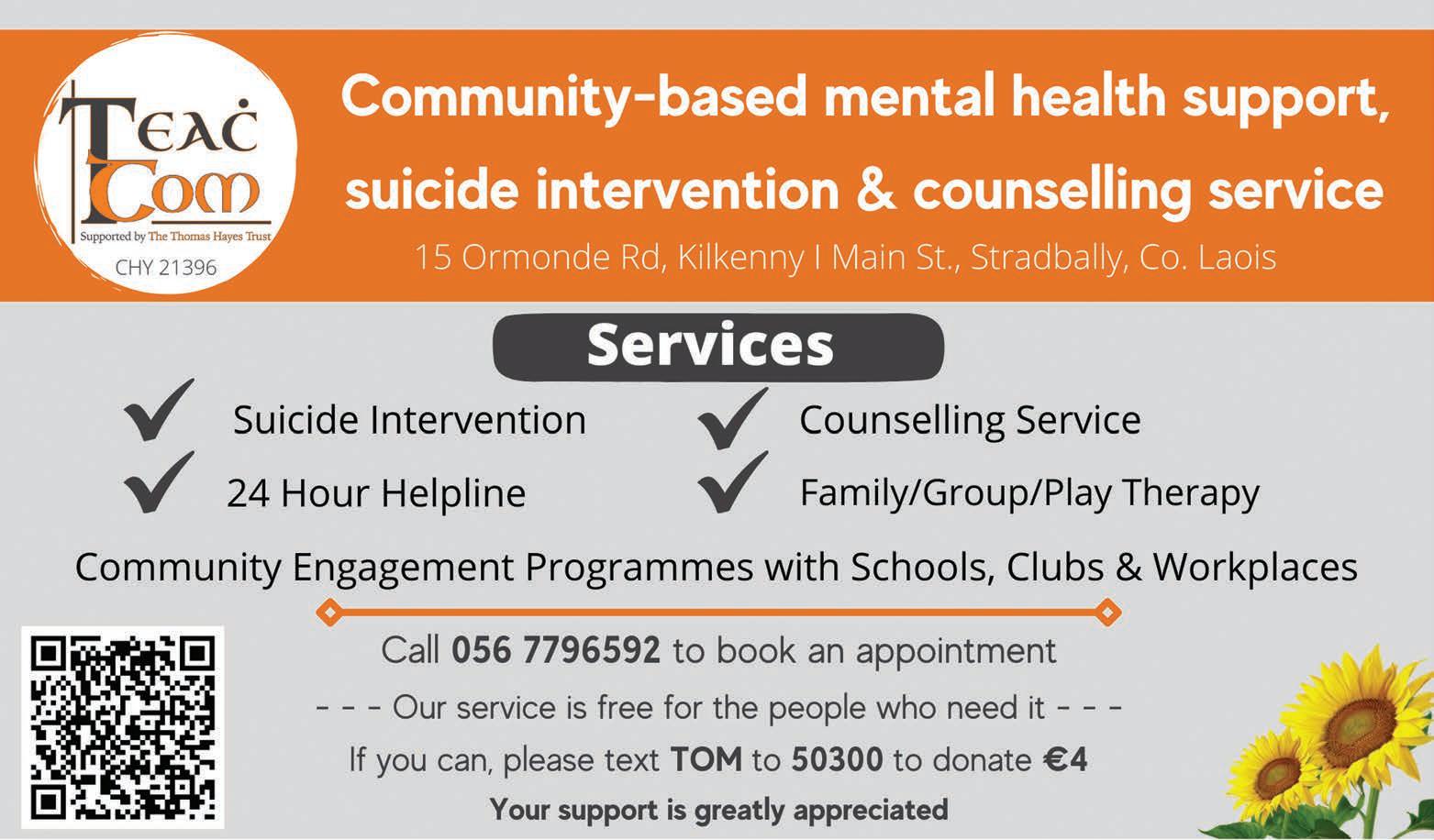
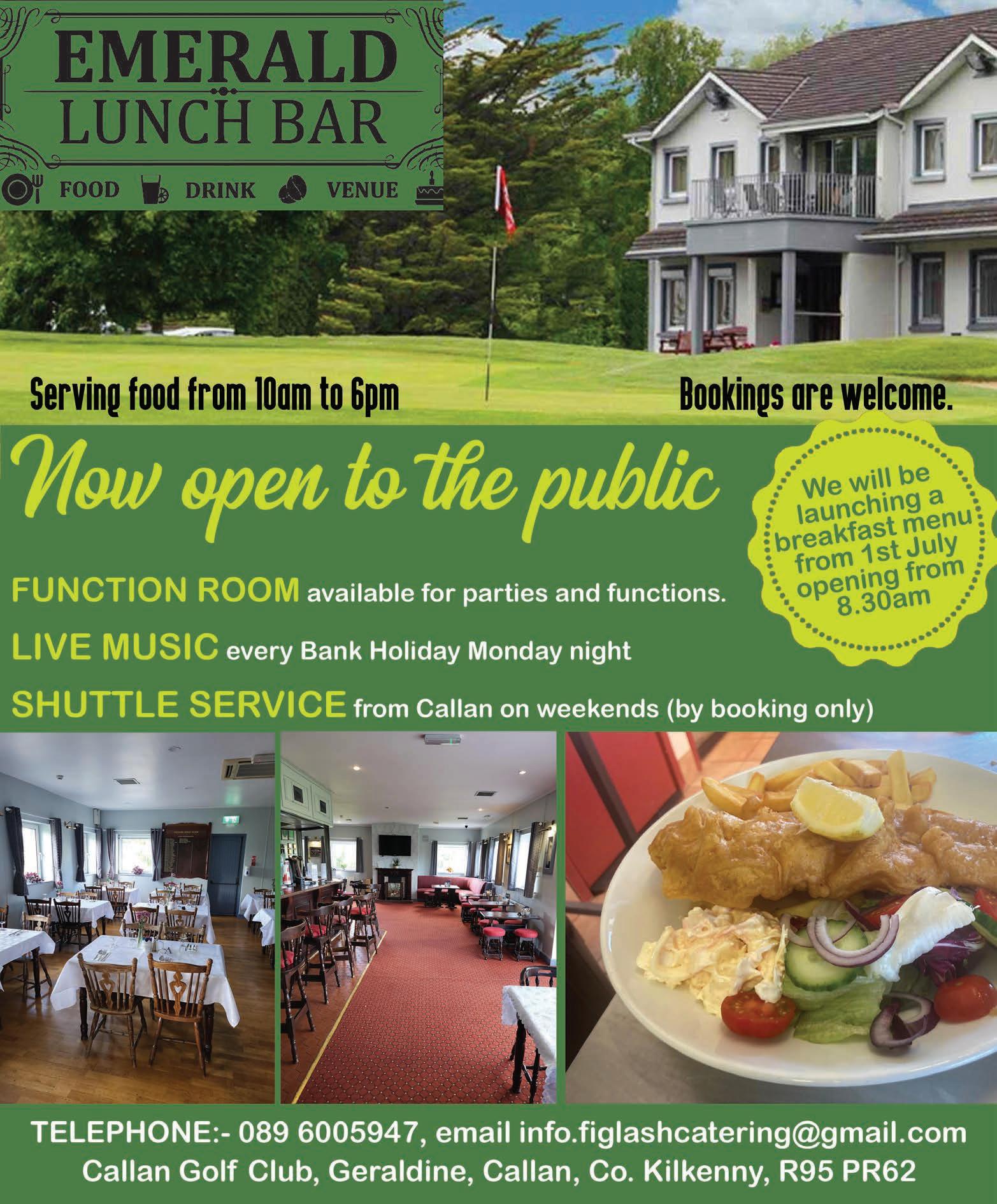
A man sat in the shade on his farm outside New Delhi and cupped a handful of this season’s disappointing wheat between his calloused palms. e grains were brown and the size of cumin seeds, shrivelled by heat.
“I can speak for my village: Everybody has had the same fate,” said Jeetram Yadav, a 70-year-old who grows wheat and rice on his 2.6-acre plot. e temperature is touching 110 degrees.
Yadav’s shrivelled grains are a small part of the dangerous feedback loop between climate-linked weather disasters and the war in Ukraine that have sent food prices soaring around the world and raising the risk of an epidemic of starvation.
When Russia invaded earlier this year, threatening Ukraine’s exports of grains, crop-rich India was seen as a global bu er, making up for the shortfall. But this spring’s erratic rains and scorching heat killed crops and made it dangerous for farmworkers to harvest, devastating India’s production. In response, India announced in May it would shut down all grain exports, staving o famine in the country but threatening starvation abroad.
It was yet another climatedriven shock to a global food system already in upheaval, and a sign of the hunger crisis that looms as the planet warms.
As of last week, about 750,000 people around the world were facing a food security “catastrophe” — at which “starvation, death, destitution and extremely critical acute malnutrition levels are evident” — according to the Food and Agriculture Organization, the UN agency tasked with ghting global hunger.
About 49 million are at risk of falling into famine conditions in the months ahead, according to a Hunger Hotspots report published last week by the FAO and the World Food Programme (WFP), the UNs’ food assistance branch.
“ ese are millions of people who literally don’t know
Nine million face famine as Ukraine war goes on
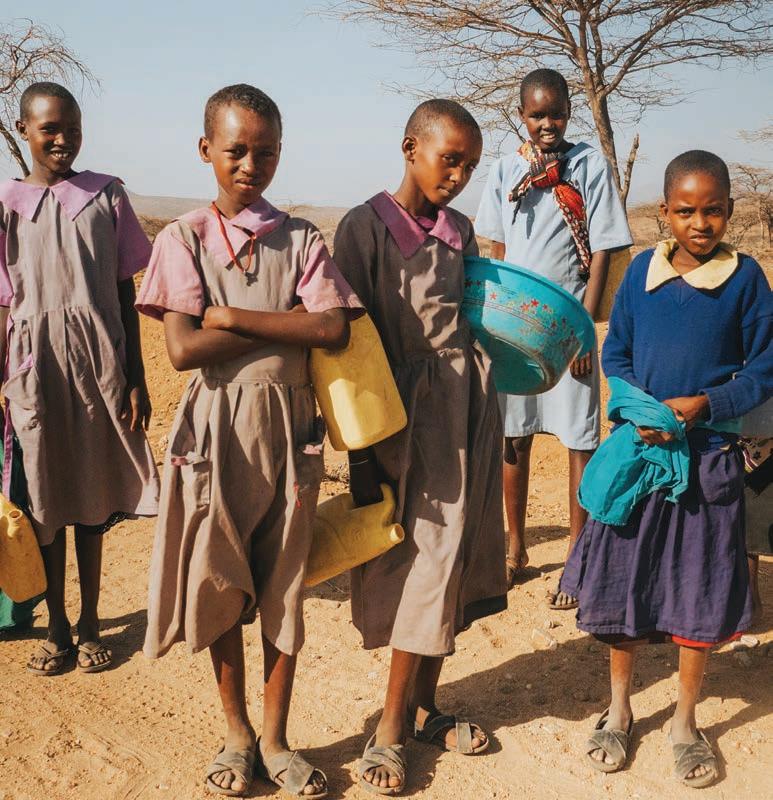
where their next meal is coming from,” said Brian Lander, deputy director of WFP’s emergencies division.
Climate change is not the only contributing factor, he noted. Supply chain issues and economic instability linked to the coronavirus pandemic have raised costs for fuel, fertiliser, shipping and other agricultural inputs. e war between Russia and Ukraine has also disrupted exports from two of the world’s biggest wheat producers, increasing the price of the grain that supplies one- fth of all calories consumed by humans.
With Black Sea shipping blocked and Ukrainian ports heavily mined, millions of tons of grains are trapped in the region. Russia has also seized wheat, bombed silos and blocked many railways, leading US and European of cials to accuse Moscow of ‘weaponising’ the world’s food supply to gain an upper hand in the war.
At talks in Turkey recently, Russian Foreign Minister Sergei Lavrov indicated support for a UN proposal that would create shipping corridors to ease the ports blockade and allow Russia to export grain and fertiliser. Ukrainian o cials expressed skepticism that Russia would not exploit the corridors for an amphibious attack, and the prospect of a deal remains elusive.
But, while the Ukraine war and the pandemic might fade with time, experts say, climate change has become a persistent threat to food security, making it more di cult to respond to unforeseen shocks.
Human greenhouse gas emissions have fuelled increasingly unpredictable weather events that can wipe out harvests for an entire region, studies show. Waves of punishing heat can kill livestock and make it unsafe for farmworkers to do their jobs. Floods and other natural disasters can devastate the infrastructure needed to transport food to hungry communities.
A February report on climate impacts and adaptation from the UN Intergovernmental Panel on Climate Change found that current warming levels of about one degree Celsius (1.8 degrees Fahrenheit) have already cut into yields of staples like wheat, sorghum and rice. If global temperatures rise an additional degree, the chance of simultaneous crop failures in di erent parts of the world rises to almost 1 in 10 for a given year. By the end of the century, the report projects, as much as 30% of current agricultural land could become unsuitable for farming.
“It does feel as though what we had in the report is just playing out in live stream when I read the news,” said Rachel Bezner Kerr, a professor of global development at Cornell University and coordinating lead author for the IPCC.
“We have consistent robust evidence of increased extreme events from climate change, which exacerbate some of these other non-climatic factors and can lead to real spikes,” she said.
Climate change impacts on food production are most felt in low-income countries that rely on a tenuous mix of locally grown and imported food, Kerr said. ese communities are increasingly struggling to ensure their own harvests but cannot a ord to pay everhigher prices on the global market.
In few places is the situation more dire than in the Horn of Africa, where recent rainfall has been just half of average and a historic drought is stretching into its fourth consecutive season. Hunger mortality rates for the region have been ticking upward, and as many as 29% of Somali children younger than ve are experiencing acute malnutrition.
About seven million livestock in Ethiopia, Kenya and Somalia have died since last fall, according to the US Agency for International Development’s Famine Early Warning Systems Network, which analyses food security for governments and humanitarian groups.
Some reasonable moves on US gun laws
One common refrain when group of Senate negotiators announced they had reached a tentative deal on a package of gun-related measures was that the package was too modest. But the agreement, if passed by Congress, would be the most signi cant piece of gun-safety legislation in more than 25 years, and for that, it should be applauded. e 20 senators —10 Democrats and 10 Republicans — have put together a framework that would join some new gun restrictions with new investments in school security and mental health services.
Among the gun provisions: incentives for states to pass and implement red- ag laws to remove rearms from potentially dangerous people; stricter gun background checks for people between the ages of 18 and 21 to include a mandatory search of juvenile justice records; and closing what is known as the “boyfriend loophole” to bar dating partners — not just spouses — from owning guns if they have been convicted of domestic violence.
Under the deal, billions of new federal dollars would go to mental health care and school security programmes.
“Families are scared, and it is our duty to come together and get something done that will help restore their sense of safety and security in their communities,” said the statement signed by the senators, who have worked closely to nd some common ground in the weeks since the backto-back mass shootings at a New York grocery store and a Texas school galvanised national sentiment for action to be taken. e proposal has not been written into legislative text, and that can be a fraught process with no guarantee of nal action. But the willingness of Democrats and Republicans to negotiate and nd agreement on an issue that has so deeply divided the two parties for so long is noteworthy and a hopeful sign our government is not completely broken.
President Biden quickly embraced the deal, saying: “Obviously, it does not do everything that I think is needed, but it re ects important steps in the right direction, and would be the most signi cant gun safety legislation to pass Congress in decades.”
Senate Majority Leader Charles E. Schumer (Democrat, NY) pledged to put a bill on the oor as soon as possible once legislation is written. Senate Minority Leader Mitch McConnell (Republican, Kentucky) released a statement praising the negotiators but stopped short of pledging to support an eventual bill.
e other reforms are needed. Notably, addressing the danger posed by assault weapons and high-capacity magazines — either banning them or, at the very least, raising the minimum age for buying them from 18 to 21, the same as is required for handgun purchases. But the compromise that has been worked out is reasonable and meaningful. It won’t save all lives lost to gun violence, but it will save some.
Meanwhile families deserve answers about how police responded to Texas school shooting. ey are still waiting for such. e US Congress must natch the courage shown by families a ected by gun violence
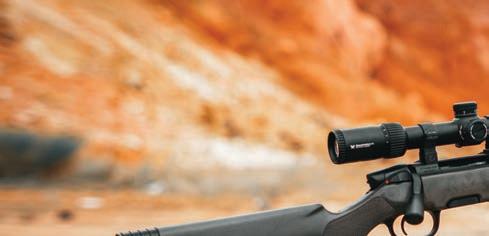





Art Summer Camps full day!
Art It is a wonderful airy space at MacDonagh Shopping Centre run by artist DiDi Dobree-Wilson that o ers ever changing and exciting summer camps for 5 to 13 year old children. ey are always stimulating, educative and fun, and often include other activities such as sewing, cooking, crystal art, string painting and much more. e age 5 to 7 camps run in the morning 10 am- 1 pm. For the 8 to13 year children, bring a packed lunch for a full day’s entertainment. Art It also o ers a walk-in experience for all ages. You can have fun painting pottery, glass, a canvas, a papier Mache piece, experimenting decoupage, or enamelling a piece of jewellery, by yourself, with your friends or with your family. During the year children enjoy oil and acrylic painting classes, and of course, the fun Saturday afternoon class. Children’s birthday parties and hen parties are great craic! Visit our website page www.artit.ie or call us at 086 3085270.

